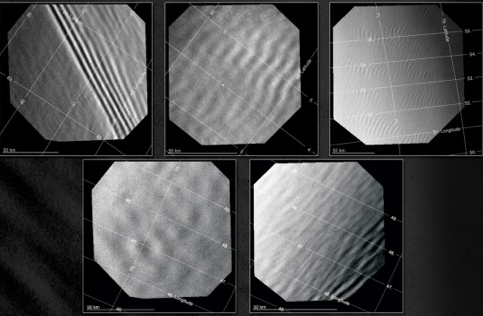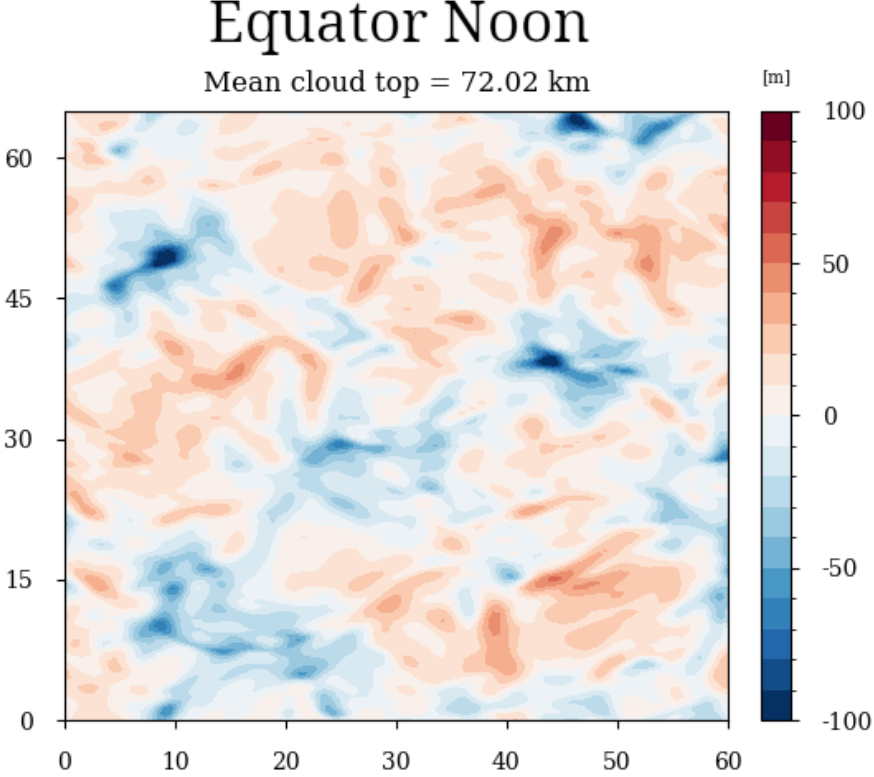Science Objective #4
Small scale investigations
At the cloud top level of Venus, numerous dynamic structures have been observed in the 365 nm absorption band of the unknown UV absorber. The VMC instrument on Venus Express detected convective-like structures near the subsolar point (equator, around 12 local solar time) extending about 20 km across. Linear wave fronts with wavelengths of 3 to 21 km were also observed, mainly above high surface elevations. These findings suggest a coupling between topography and atmospheric circulation at the cloud tops, later confirmed by thermal infrared observations from Akatsuki.
The presence of small-scale spatial contrasts in the UV absorber raises questions about similar variations in other parameters at the cloud top, such as SO₂ and SO column densities and cloud top altitude. These observations are valuable for improving large eddy or mesoscale simulations that model small-scale dynamics and local processes, like photochemistry or microphysics. Current models rely on assumptions (e.g., boundary conditions, chemical reactions, microphysical processes) that remain poorly understood as of today. New, detailed observations could help refine these assumptions, enhancing our understanding of the interactions among dynamics, chemistry, and clouds.


